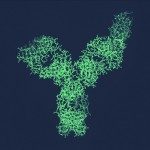Link to Pubmed [PMID] – 17646652
Proc. Natl. Acad. Sci. U.S.A. 2007 Jul;104(31):12697-702
Most orally bioavailable drugs on the market are competitive inhibitors of catalytic sites, but a significant number of targets remain undrugged, because their molecular functions are believed to be inaccessible to drug-like molecules. This observation specifically applies to the development of small-molecule inhibitors of macromolecular interactions such as protein-membrane interactions that have been essentially neglected thus far. Nonetheless, many proteins containing a membrane-targeting domain play a crucial role in health and disease, and the inhibition of such interactions therefore represents a very promising therapeutic strategy. In this study, we demonstrate the use of combined in silico structure-based virtual ligand screening and surface plasmon resonance experiments to identify compounds that specifically disrupt protein-membrane interactions. Computational analysis of several membrane-binding domains revealed they all contain a druggable pocket within their membrane-binding region. We applied our screening protocol to the second discoidin domain of coagulation factor V and screened >300,000 drug-like compounds in silico against two known crystal structure forms. For each C2 domain structure, the top 500 molecules predicted as likely factor V-membrane inhibitors were evaluated in vitro. Seven drug-like hits were identified, indicating that therapeutic targets that bind transiently to the membrane surface can be investigated cost-effectively, and that inhibitors of protein-membrane interactions can be designed.

